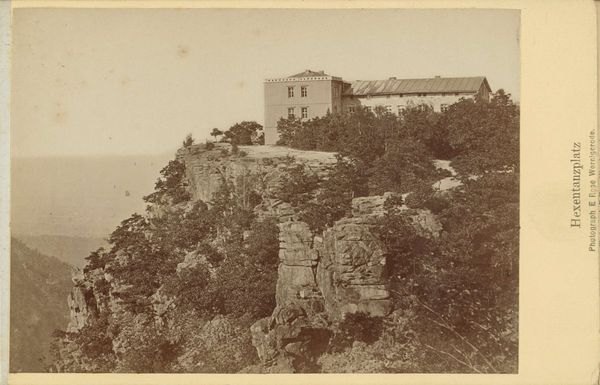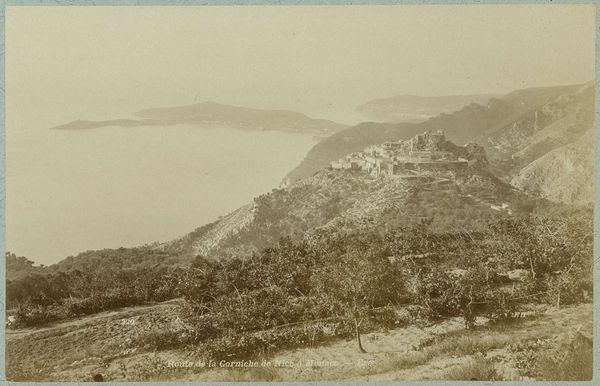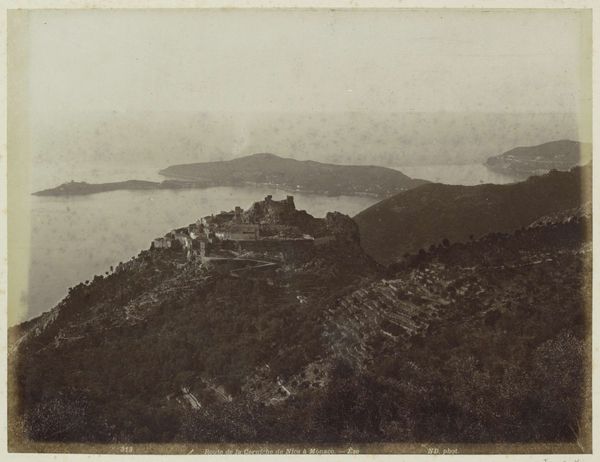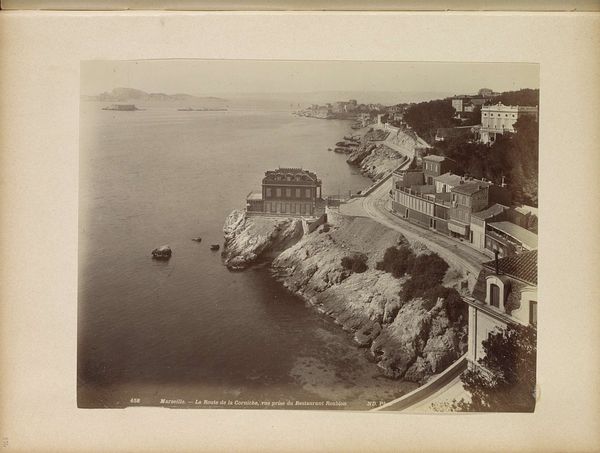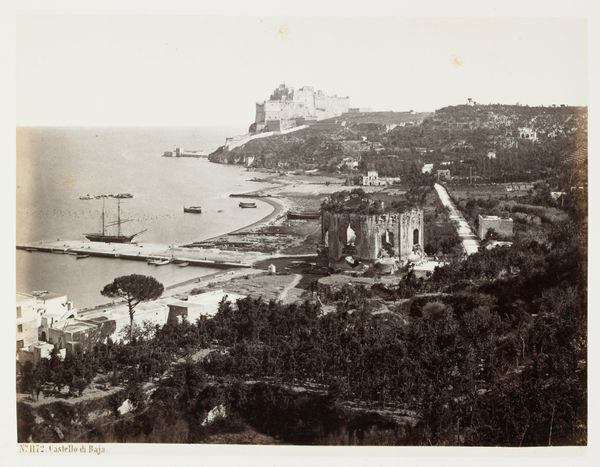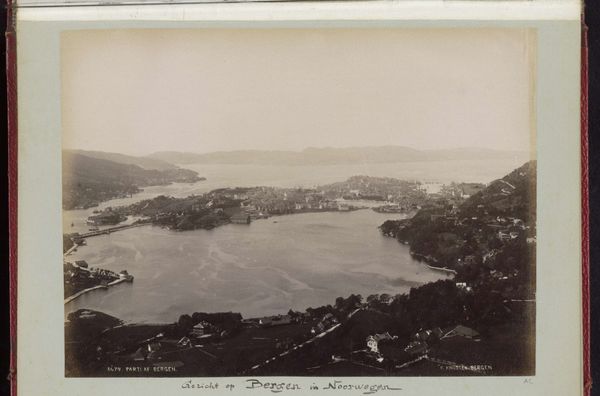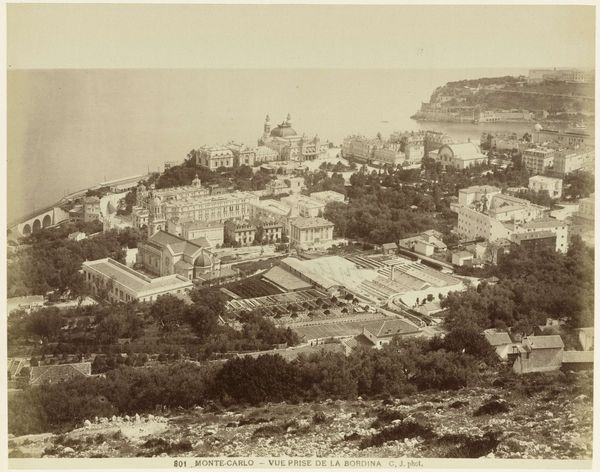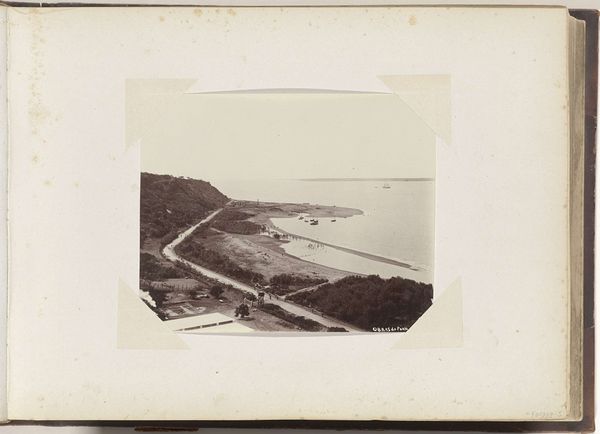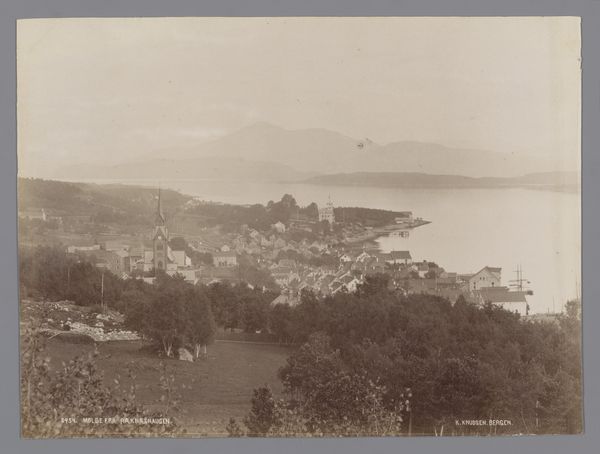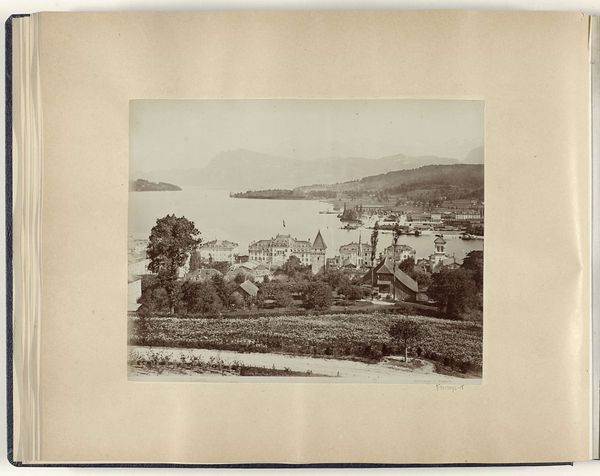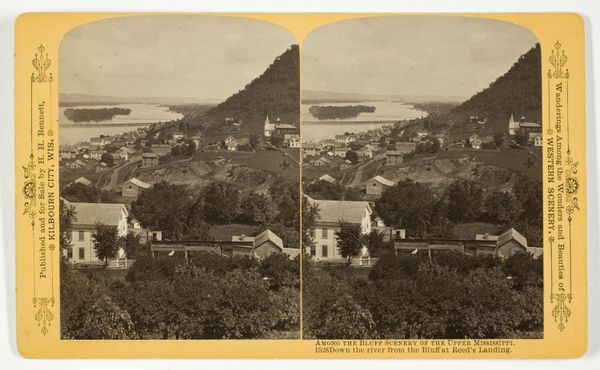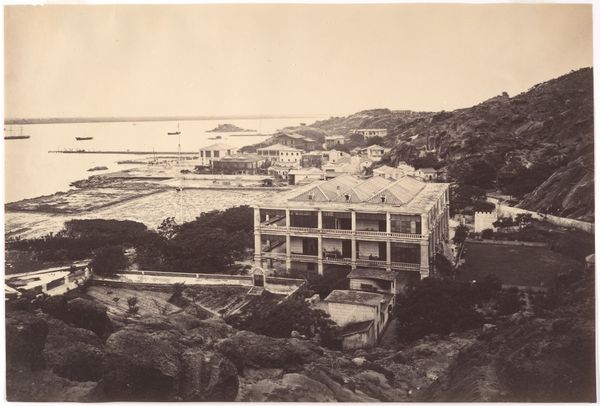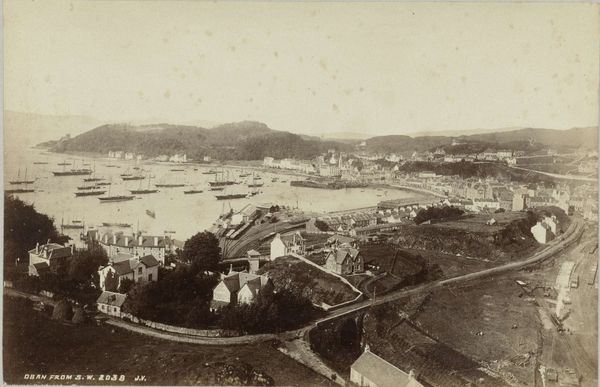
photography, albumen-print
#
landscape
#
street-photography
#
photography
#
albumen-print
#
realism
Dimensions: height 202 mm, width 259 mm
Copyright: Rijks Museum: Open Domain
Curator: We're looking at a photograph entitled "Gezicht op Beaulieu-sur-Mer tussen Nice en Monaco," taken around 1870-1900 by Étienne Neurdein. It's an albumen print. My immediate impression is its stillness; the silver tones and the sweeping view impart a palpable serenity. Editor: Stillness, perhaps, but also the constructed nature of leisure for a certain class. Look at the details, the layers of trees obscuring parts of the town, suggesting controlled access. Who is being invited to enjoy this vista and at whose expense? The development of the French Riviera during this period hinged on exploitative labor practices. Curator: That's a crucial point. Considering the albumen print process itself, which was popular during this time. Think of the labor involved – coating the paper with egg whites, sensitizing it with silver nitrate. These are highly specific, almost alchemical, processes. Was Neurdein employing local workers? What were the working conditions in photographic studios in this area at the time? Editor: Exactly! The image, while seemingly objective, is a product of specific material conditions and social hierarchies. We must remember the broader context: the Belle Époque in France and its intersection with colonial power dynamics, with resources flowing in from elsewhere, supporting these leisure destinations. This photographic practice itself reinforced visual tropes that privileged the Western gaze. Curator: And speaking of gaze, notice the composition, the layering of landscape. There is that dense, foreground foliage almost functioning as a stage curtain framing this idealized view of Beaulieu. Then your eye is carried across the calm water towards the distant promontory, topped by what looks like a fortress or tower. Editor: It is romantic in a way, and part of that romantic vision contributed to the creation of a playground for European elites, even further marginalizing the local population. These picturesque views sold an aspirational lifestyle, fueled by economic disparity and social exclusion. Curator: It makes me consider what is not pictured. Neurdein provides this seemingly neutral vista, obscuring or ignoring so much underlying economic disparity in order to manufacture what we might identify as ‘landscape.’ Editor: These types of images actively suppressed other potential realities to promote a singular vision. Even in what seems to be merely an untouched view, power dynamics are ever-present.
Comments
No comments
Be the first to comment and join the conversation on the ultimate creative platform.
